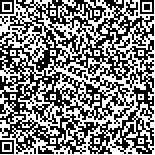下载中心
优秀审稿专家
优秀论文
相关链接
摘要

嫦娥三号降落相机在探测器实施软着陆的过程中获取了大量序列月面图像,这些图像不仅为公众提供了可视化的着陆过程,而且为着陆器在卫星遥感影像上的高精度定位提供了数据基础。在分析这些序列图像成像几何特性的基础上,提出一种利用降落序列图像进行嫦娥三号着陆器轨迹及姿态恢复的方法。首先通过序列影像进行自由网平差,建立各降落影像及月面的相对位置和姿态关系;然后通过量测卫星遥感影像及降落影像上月面标志物的尺寸,求解出建立的相对模型的尺度,从而恢复出序列降落影像在着陆过程中的带尺寸的位置和姿态;最后通过降落影像的密集匹配,完成着陆区域月表3维模型的重建。本文充分挖掘了降落相机的应用潜力,为嫦娥三号着陆任务中后续科学探测工作提供了高精度的数据支持。
Chang'e-3 (CE-3) was successfully soft landed on the Moon on Saturday, December 14, 2013. The descent camera onboard lander acquired a large amount of descent images during the landing process. In addition to visualization of the landing process to the public, these images are supportive for pinpointing locations of lander and rover after landing. With a detailed analysis of the geometric characteristics of these sequence descent images, we propose a method to recover the descending and landing trajectory using descent images with bundle adjustment techniques.Descending and landing trajectory can provide critical information of the motion state of lander during safe landing. So far, there is no report of recovery of descending and landing trajectory using descent images for Lunar or Mars landers. In this paper, we study the capability of trajectory recovery using CE-3 descent images. By fully utilizing the information of descent images, we reconstruct the trajectory and the three-dimensional terrain model of the CE-3 landing area. We provide a new approach to obtain-ing the lander's states in entry, descending, and landing phases. The derived Digital Terrain Model (DTM) of landing area is of very high resolution and valuable in mission operations and scientific investigations. The method includes the following steps: (1) SIFT-based image matching is performed among the sequence images. (2) Match-ing gross errors are eliminated by a RANSAC algorithm and the remaining matched points are used as tie points to form an image network. (3) Bundle adjustment of the image network is performed with control points which were acquired by matching the descent images with a Digital Ortho Map (DOM) generated from CE-2 images previously. As the output of bundle adjustment, the descending and landing trajectory is obtained, which includes the positions and attitudes of the lander when the descent images were taken. Based on the recovered trajectory, the lander's states on entry, descending, and landing can be analyzed. DOM and DEM with much higher resolution than orbiter images have also been generated from the descent images.We obtain 26 control points and 18 check points from 1.5 m resolution DOM and 4 m resolution DEM. The points are incorporated in the bundle adjustment. The RMS of control points and check points are 0.60 m and 0.75 m respectively. Based on the trajectory obtained from bundle adjustment, the lander's motion state is analyzed, in which the speed curve and acceleration curve can reveal the engine thrust changes. The Digital Surface Model (DSM) with a resolution of 0.4 m has been produced and has been used in rover path planning and other mission operations. This method has been proved effective through applications in CE-3 mission.

